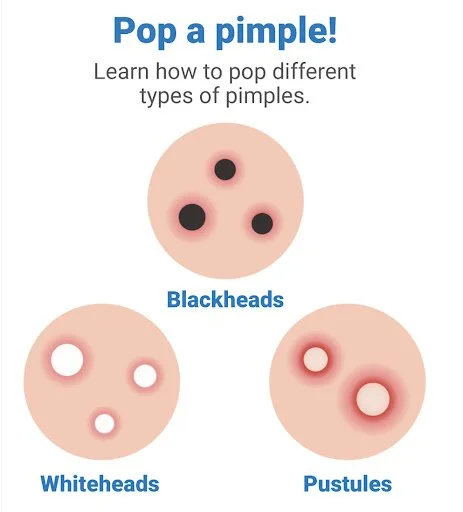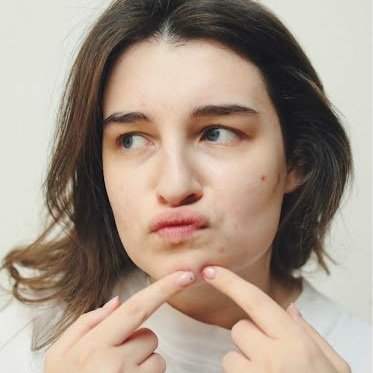Pimple Poppin’ 101
Popping your zits is just so utterly satisfying. Just a little squeeze- results in that oh-so-gratifying release of the gunk inside.
But here’s the catch: Pimple-popping is not a healthy practice and could damage your skin if done incorrectly. It can cause more problems than good, including inflammation and acne scars.
If you are bound and determined to pop that pesky pimple, Read on! Here’s the best way to go at it.
What even is a pimple?
Basically, that pimple is a blocked pore. It can be filled with hair, sebum (an oily substance), bacteria or dead skin cells. As the gunk and oils build-up, the tell-tale bumps pop up on your skin … no doubt at the worst possible time. There are different types of pimples: whiteheads, blackheads and pustules.
“So how do I correctly pop a pimple?”
Whether you’re dealing with a blackhead, whitehead or pustule, the first step is always the same: Wash those little dirty hands of yours.
Do some prep work!
You can pop pimples far more easily if you loosen the plug first. Over-the-counter (OTC) medications such as retinoids or salicylic acid can effectively open up your pores.
Popping blackheads
After using an OTC medicine, popping a blackhead is fairly simple. Gently apply pressure to the outer edges with either your fingers or cotton swabs.
The plug should pop out easily, as blackheads are technically open pores, says Dr. Piliang.
Popping whiteheads
Whiteheads are closed pimples, so you’ll need to create an exit point for the plug. Sterilize a needle with alcohol and gently prick the top of the pimple.
After making the opening, apply pressure in the same way you would to extract a blackhead.
Popping pustules
A pustule sits deeper beneath your skin, so it requires a bit more work. Use a hot compress to draw the pus to the surface before applying pressure. As with a whitehead, you may need to use a sterilized needle to open an exit.
Stop the process if your popping attempt isn’t immediately successful. “If nothing comes out, wait a while,” says Dr. Piliang. “If you try to manipulate and squeeze it too much, you will only make the problem worse.”
Treatment after popping a pimple
So, you’ve popped the offending pimple and what’s left behind may be a leaking, oozing hole. Now what?
First, wash your hands and face to get the ick off. Applying an antibiotic ointment can help keep bacteria at bay. (If seeing the zit created some angst, you really don’t want to see what a follow-up infection would look like.)
There are special products available, too. A “pimple patch” or “zit sticker” contains a healing gel called hydrocolloid that can help with skin repair. It can help your pimple-popping wound shrink and become less inflamed.
Risks of pimple popping
Picking at blemishes comes with risks. Being too aggressive with your popping attempts could cause skin inflammation or long-term scarring. It could also stretch your pores, permanently making them bigger.
“You could take something small and not noticeable to someone else and make it a big, red bloody mess,” says Dr. Piliang says.
Your best bet? Prevent the next pop session
Pimple popping is, by far, the most popular way of dealing with these forms of acne, Dr. Piliang says. But working with your dermatologist is a much better method that’s safer for your skin in the long run.
“It’s a good idea to see a dermatologist who can advise you on how best to treat your acne,” she advises. “He or she can get you on a regimen to treat the existing blemishes and prevent new ones from coming up.”
Information sourced from the Cleveland Clinic


